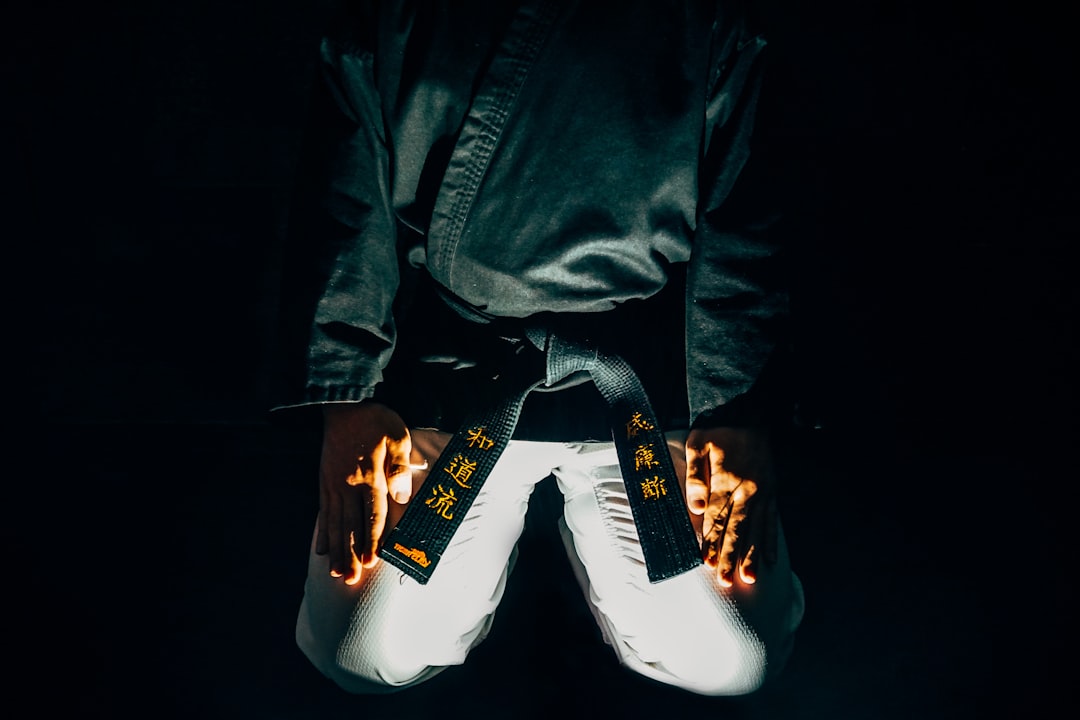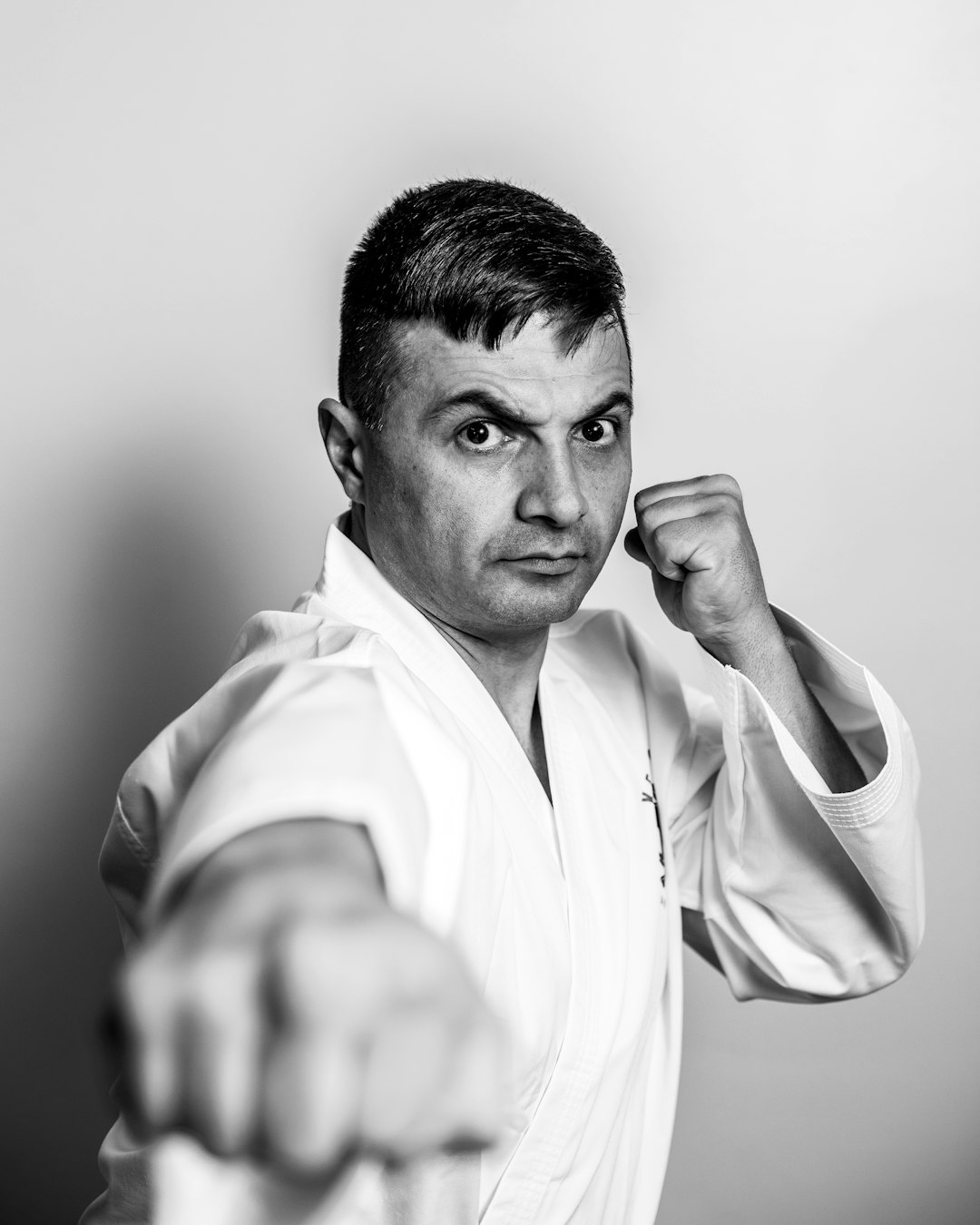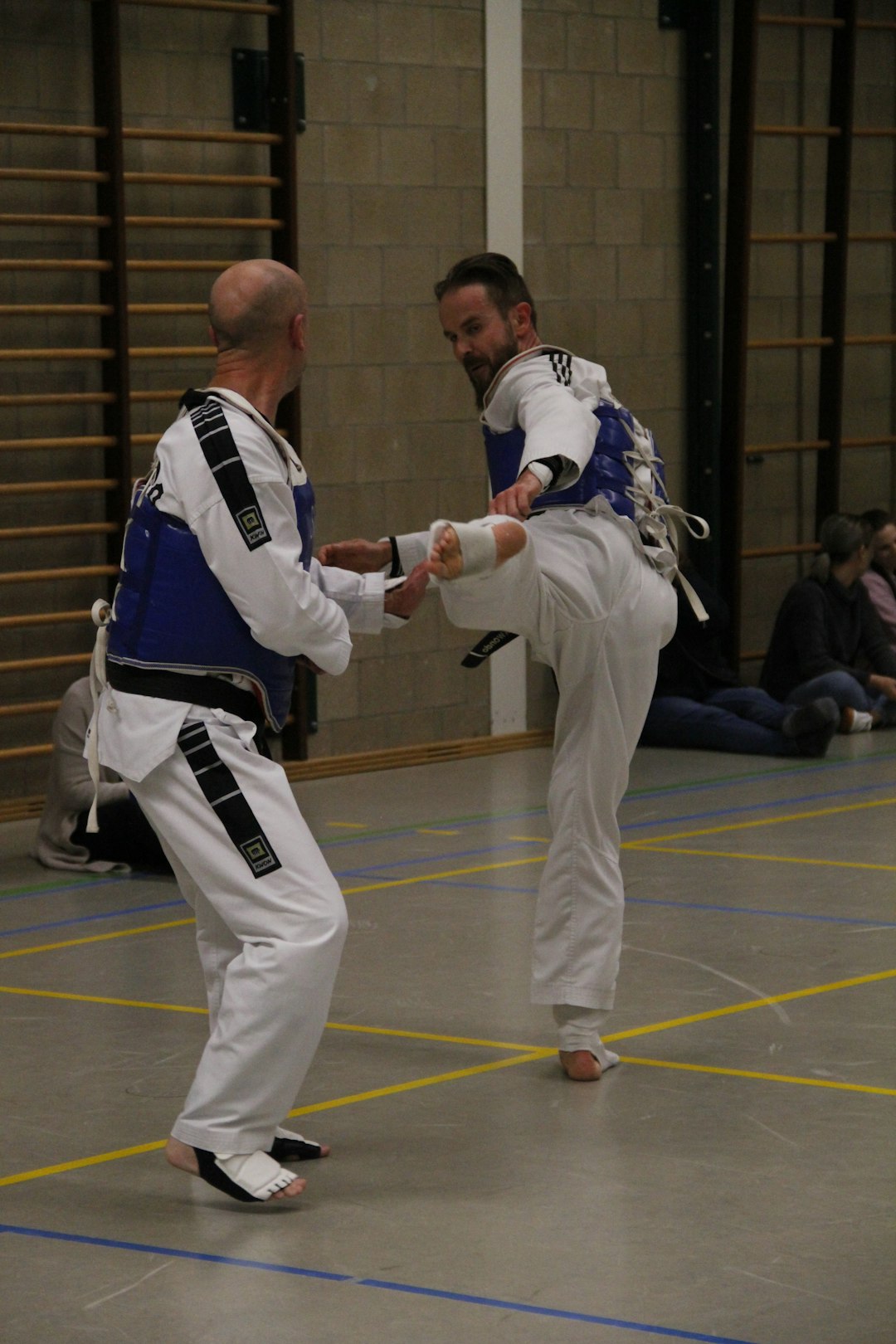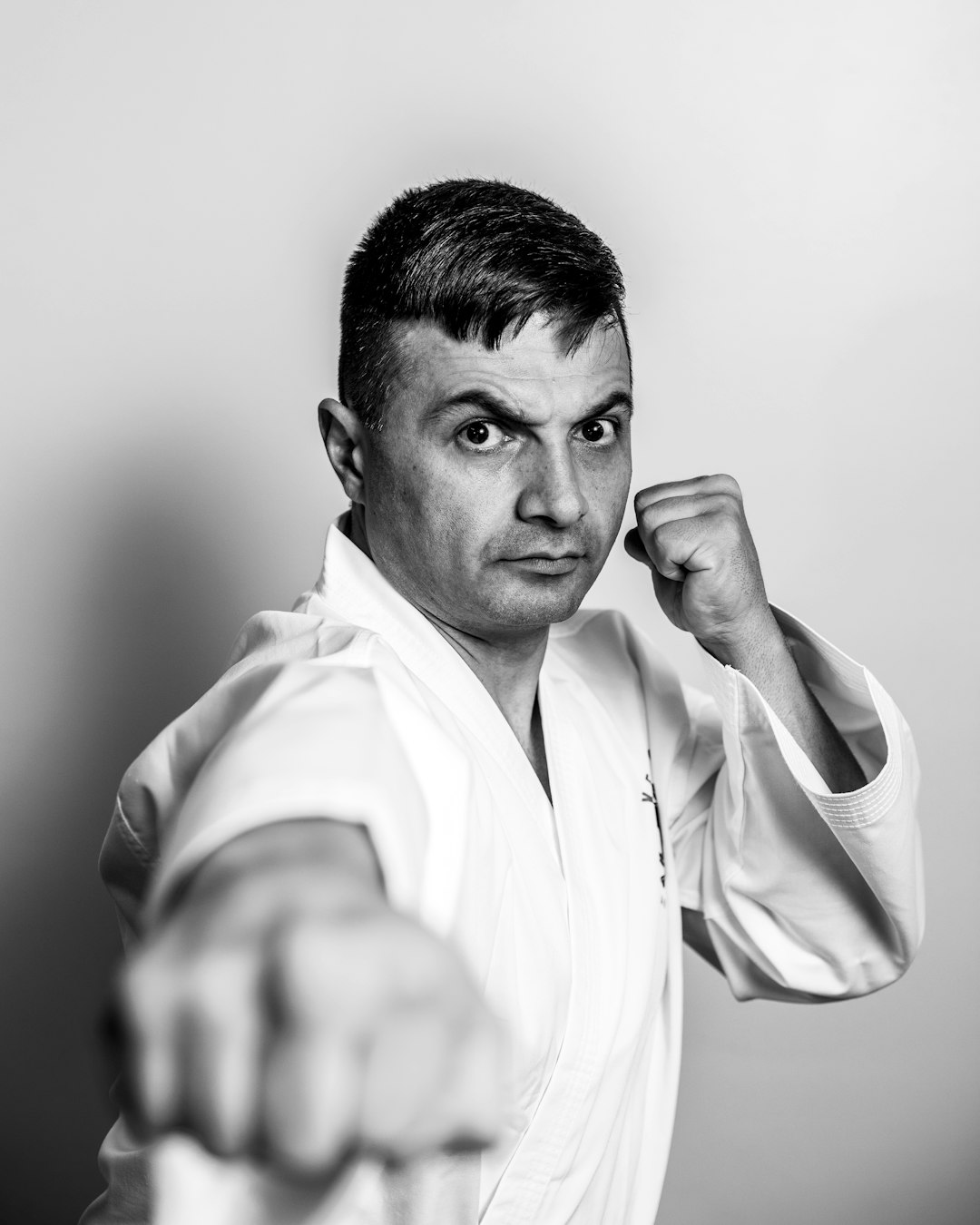The karate outfit name, or gi, is a fundamental aspect of karate training, embodying both functional design and symbolic significance. Traditionally rooted in Chinese martial arts attire and adapted for Japanese karate, the gi consists of a jacket called 'uchiwa de' and straight-legged pants named 'rei gi.' Crafted from durable fabrics like cotton or hemp, it is both comfortable and enduring, suitable for the demands of rigorous training. The evolution of the gi from a Japanese kimono to a specialized karate garment includes the addition of an obi belt and reinforced knees. Today's gi reflects karate's heritage and its adaptability, featuring characteristics influenced by various styles and cultural exchanges. A white gi is universally recognized as the standard in karate practice, representing purity, unity, and readiness. When choosing a gi, it's crucial to consider comfort, mobility, and adherence to martial arts etiquette, as it symbolizes respect for the art. Modern enhancements to the gi include reinforced stitching, moisture-wicking properties, and anti-microbial treatments, offering contemporary benefits while maintaining the karate tradition's integrity. These advancements ensure that the karate outfit name remains a pivotal element of the discipline, blending respect for history with the practical needs of modern practitioners.
Karate enthusiasts and practitioners often step onto the mat with a garment that is as integral to the practice as the martial art itself. But what do you call the karate uniform that practitioners don? This article delves into the karate outfit name and its significance, exploring the traditional attire’s history, characteristics, and modern adaptations. From the origins of the Karate Gi to selecting the ideal garment for your practice, we’ll cover all aspects that encapsulate this essential element of martial arts training. Join us as we strike at the heart of karate etiquette and attire, focusing on the karate outfit name and its role in the discipline’s rich tradition.
- Understanding the Essentials: What Is the Traditional Karate Uniform Called?
- The Evolution of the Karate Gi: A Historical Perspective
- Key Characteristics of a Karate Outfit: Material, Fit, and Function
- Selecting Your Karate Gear: Choosing the Right Gi for Your Practice
- Modern Twists on Traditional Attire: Innovations in Karate Uniforms
Understanding the Essentials: What Is the Traditional Karate Uniform Called?

When engaging in the discipline of karate, the practitioner dons a specific garment that is both functional and symbolic. Known as a ‘keikogi’ or ‘gi’ for short, this traditional karate uniform serves as more than just an outfit; it represents the wearer’s commitment to the art. The keikogi typically consists of a jacket and pants, both designed for mobility and durability during practice. Are you curious about the origins and significance of this karate outfit? The gi is a direct descendant of the traditional Chinese martial arts attire, which over time has been adapted to suit the needs of Japanese karate practitioners. It is crafted from heavy cotton or hemp fabric, ensuring both comfort and resilience during training sessions. The jacket, known as ‘uchiwa de’, features a belt or ‘obi’ to hold it closed, while the pants, called ‘rei gi,’ are straight-legged and designed for ease of movement. Understanding the essentials of what the karate outfit is called is fundamental not only for practitioners but also for those who appreciate the rich history and traditions associated with this martial art.
The Evolution of the Karate Gi: A Historical Perspective

The traditional garment worn in karate, commonly known as a gi, has a rich history that reflects the evolution of the martial art itself. Originating from the Japanese kimono, the gi has undergone significant changes to meet the functional demands of the discipline. Initially, practitioners wore everyday clothing to their training sessions, but as karate formalized and spread beyond Japan, the need arose for a uniform that was both practical for the movements involved and symbolic of the martial artist’s dedication. What do you call the karate uniform? The evolution of the karate outfit, or gi, can be traced back to its roots in Okinawa, where it was adapted from traditional Japanese attire to suit the needs of karateka. Over time, the design of the gi has been standardized, with features such as a belt, known as an obi, and reinforced knees for protection during practice. The cut and color of the gi have also been influenced by different styles of karate and cultural preferences, leading to slight variations in its appearance across dojos worldwide. How have these changes shaped the modern understanding of what the karate outfit is named? Today’s gi is a testament to the martial art’s history and its adaptability to diverse environments and practitioners, embodying both tradition and functionality in its design.
Key Characteristics of a Karate Outfit: Material, Fit, and Function

When practicing the discipline of karate, the attire one wears is as significant as the techniques executed. A traditional karate outfit, often referred to as a gi, serves multiple purposes beyond its aesthetic value. The gi typically consists of a jacket, trousers, and a belt, each element designed with functionality in mind. Made from heavyweight cotton or hemp, which allows for ease of movement while absorbing perspiration during intense training sessions, the material of a karate outfit is both practical and comfortable. Does the material of a karate gi affect performance? Absolutely; the ideal fabric should be breathable yet sturdy enough to withstand the rigors of martial arts practice. The fit of a karate uniform is tailored to accommodate the full range of motion required in karate, ensuring that there are no hindrances during practice or competition. What constitutes an optimal fit for a karate practitioner? It should be snug yet not restrictive, allowing for complete freedom of movement while maintaining modesty and adherence to traditional standards. The function of the karate outfit extends beyond the physical; it also represents the wearer’s rank within the dojo, as indicated by the color and style of the belt tied around the waist. Is there a specific type of karate outfit name that signifies the wearer’s status in karate? Yes, the specific karate outfit name, or gi, is complemented by a belt, known as a obi, which conveys the level of skill and dedication achieved by the practitioner. The traditional white gi, with its simple yet elegant design, remains the most widely recognized karate outfit name globally, symbolizing purity, unity, and readiness for training.
Selecting Your Karate Gear: Choosing the Right Gi for Your Practice

When embarking on the journey to select the ideal karate outfit, also known as a gi, it’s crucial to consider several factors that will ensure both comfort and appropriateness for your practice. The gi is not merely a garment but a symbol of respect for the martial art and its traditions. Made of sturdy cotton or hemp fabric, the gi provides a uniform look among practitioners, fostering equality and discipline on the mat. It’s essential to choose a gi that fits well and allows for a full range of motion; otherwise, your movements may be restricted, impacting your technique and performance. Are you looking for a gi that will stand up to the rigors of intense training while maintaining its shape and durability? Opt for a heavy-weight option, typically made from 10oz cotton. Prefer something lighter for speed and agility during competition or sparring? A light-weight gi, usually with a 9oz cotton fabric, might be more suitable. Do you engage in traditional kata practice or focus on dynamic sparring? Ensure the jacket length complements your specific style of karate—a longer jacket is often preferable for kata to avoid troubling tripping hazards, whereas a shorter jacket allows for greater mobility during rapid movements and dodges. Lastly, consider the color; most dojos require a white gi as it signifies purity and humility, foundational virtues in karate practice. What size and weight of gi will best support your karate discipline? Selecting the right karate outfit is a pivotal step in your martial arts journey, one that can enhance both your training experience and your respect for the art itself.
Modern Twists on Traditional Attire: Innovations in Karate Uniforms

Modern practitioners of karate often seek to honor tradition while incorporating elements that cater to contemporary needs and comfort. The traditional karate outfit, commonly known as a “gi,” is a simple garment consisting of a jacket and pants, typically made of cotton or a similar breathable fabric. However, advancements in textile technology have led to the emergence of innovative materials and designs aimed at enhancing performance, durability, and comfort without compromising the essence of the martial art’s rich heritage. Today, you might find karatekas training in gis that include reinforced stitching for increased longevity, moisture-wicking fabrics to manage sweat during rigorous practice, and even anti-microbial treatments to maintain freshness. These modern twists on traditional attire ensure that the karate outfit name remains functional and adaptable to the evolving demands of the sport. Are the new materials used in karate gis superior to traditional fabrics? Yes, they often offer enhanced performance benefits while retaining the classic look and feel of the traditional gi. How do these innovations benefit karate practitioners? They provide comfort, durability, and functionality, which are essential for both training and competition.
In wrapping up our exploration of the multifaceted world of karate, one element that consistently stands out is the significance of the karate outfit, commonly known as a ‘Gi.’ This article has delved into the historical origins and evolution of this traditional attire, its key characteristics that make it functional for practice, and how modern advancements have adapted this timeless garb to suit contemporary needs. Whether you are a novice or an experienced practitioner, understanding the karate outfit name and selecting the right Gi is crucial for both performance and respect for the discipline’s rich heritage. As a final note, the Gi remains more than just a uniform; it is a symbol of unity, tradition, and the collective spirit that drives martial artists worldwide.
